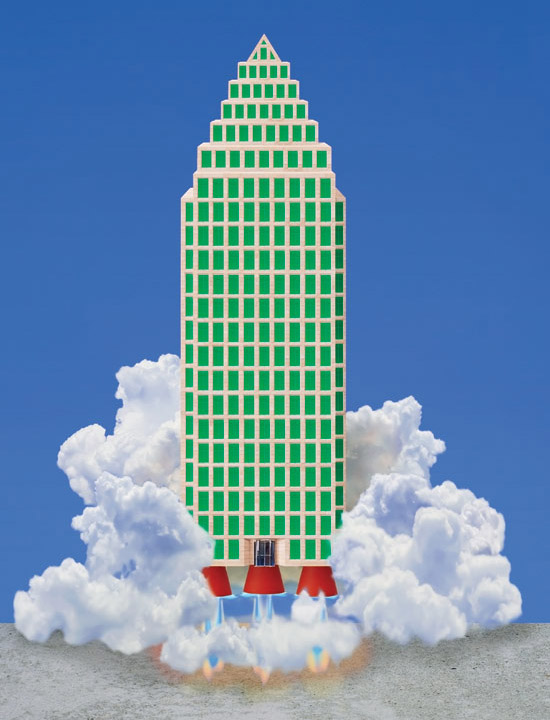Up, Up, and Away
Learning Objectives:
- Outline different strategies for reducing energy and water consumption that are currently being implemented in tall buildings.
- Explain the efficiency benefits that can be achieved with double curtain wall facades, as well the reasons why some architects and clients continue to question their sustainability.
- Describe the challenges posed by wind flows around buildings and stack effects within them, and discuss how these natural forces are being exploited to deliver efficiency benefits.
- Discuss factors that increase the energy content of water used in tall buildings, and several means of reducing consumption of municipal water.
Credits:
Tall buildings can no longer rest on their iconic status to justify outsize energy consumption: that is the message one hears from architects and engineers of tall buildings today, whose clients are asking for more efficient structures, whether they be megatall buildings that exceed 1,968 feet, as defined by the Council on Tall Buildings and Urban Habitat (CTBUH), or a modest 15-story high-rise.
That trend toward efficiency may well be strongest in the country that is currently putting up more tall and supertall buildings than any other—China. David Malott, a principal with architectural firm Kohn Pedersen Fox (KPF), says ambition for world-leading sustainability is a given for the supertall buildings (exceeding 984 feet height according to CTBUH) going up in just about every major Chinese city. “We're not dealing with icons anymore. For nearly all of them the clients are targeting a LEED Gold benchmark,” says Malott. The reason? Pressure from the central government to confront China's dubious distinction as the world's top carbon polluter. “These projects are big and could be seen as simply trophies, so there's a greater sensitivity … to ensure that they come out sustainable,” explains Malott.
Responding to such demands, and to the rising global focus on energy consumption and sustainability, architects and engineers are innovating across the board. Tapered forms and vents are reducing the wind loads that often drive requirements for structural mass. Water-recovery systems are capturing and reusing wastewater. And novel adaptations are expanding radiant heating and cooling beyond their traditional European stronghold. Sophisticated facades and automated louvers are also, like radiant conditioning, challenging the hegemony of HVAC by exploiting natural forces to distribute cool, fresh air. “These buildings are mining air as they go up in the air. They look like they're static, but they're working,” says Gordon Gill, partner at Adrian Smith+Gordon Gill Architecture (AS+GG) in Chicago—designers of the more than 3,280-foot-high Kingdom Tower under construction in Jeddah, Saudi Arabia, that is set to overtop the world's tallest building, the 2,717-foot Burj Khalifa tower in Dubai designed by Skidmore, Owings & Merrill (SOM).
 |
|
Illustration by Holly Lindem |
Such innovation is not a quick process, especially for supertall and megatall buildings, whose design gestation is a three-to-six-year process and whose scale makes owners risk-averse. Generally, innovations are proven at lower scale first and then cautiously edged up. Exceptions to this bottom-up rule do occur, however, when innovating is the only way to reach higher. One such exception may be the use of carbon fiber cables, recently introduced, which may nearly double elevators' maximum-run length.










